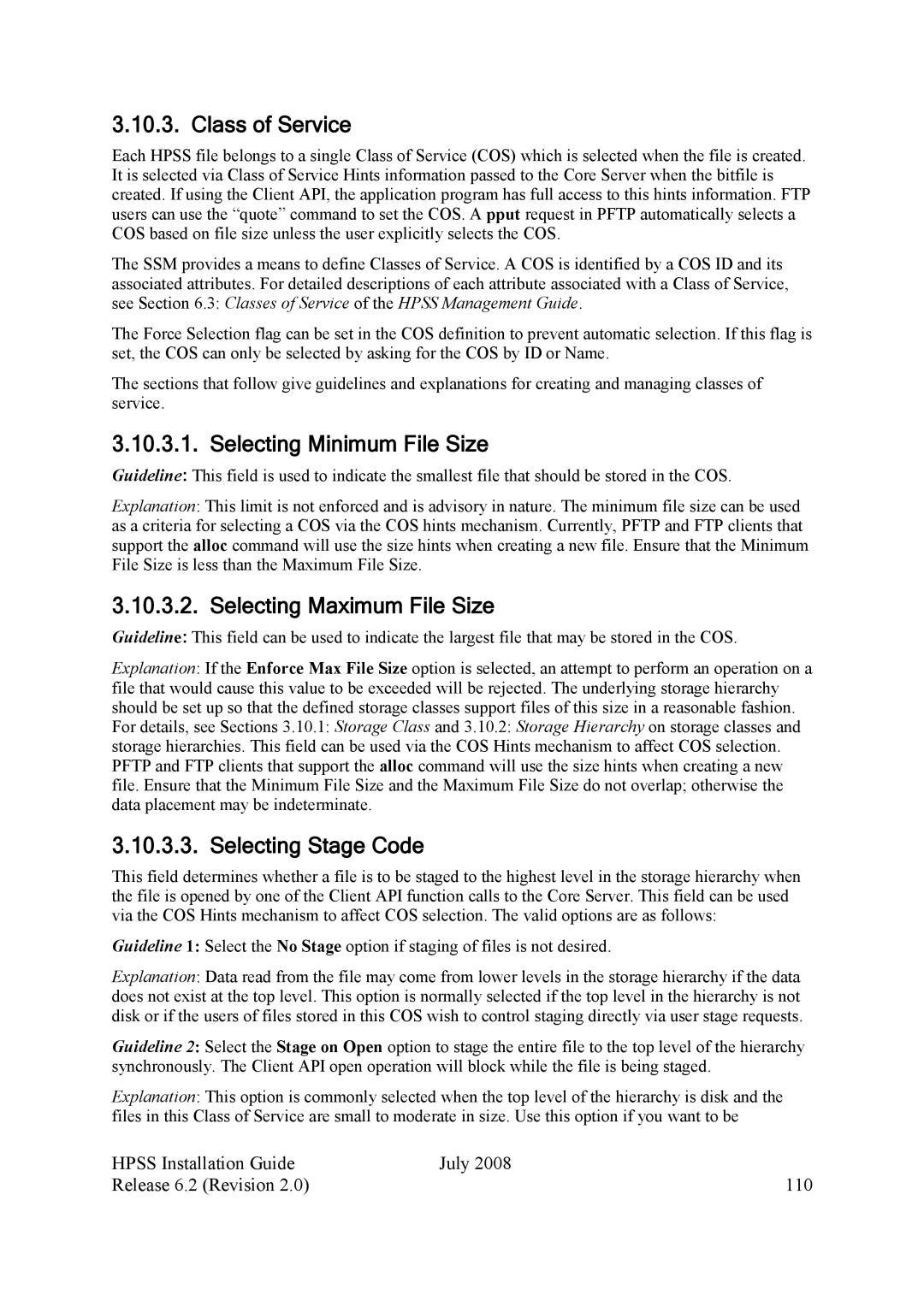3.10.3. Class of Service
Each HPSS file belongs to a single Class of Service (COS) which is selected when the file is created. It is selected via Class of Service Hints information passed to the Core Server when the bitfile is created. If using the Client API, the application program has full access to this hints information. FTP users can use the “quote” command to set the COS. A pput request in PFTP automatically selects a COS based on file size unless the user explicitly selects the COS.
The SSM provides a means to define Classes of Service. A COS is identified by a COS ID and its associated attributes. For detailed descriptions of each attribute associated with a Class of Service, see Section 6.3: Classes of Service of the HPSS Management Guide.
The Force Selection flag can be set in the COS definition to prevent automatic selection. If this flag is set, the COS can only be selected by asking for the COS by ID or Name.
The sections that follow give guidelines and explanations for creating and managing classes of service.
3.10.3.1. Selecting Minimum File Size
Guideline: This field is used to indicate the smallest file that should be stored in the COS.
Explanation: This limit is not enforced and is advisory in nature. The minimum file size can be used as a criteria for selecting a COS via the COS hints mechanism. Currently, PFTP and FTP clients that support the alloc command will use the size hints when creating a new file. Ensure that the Minimum File Size is less than the Maximum File Size.
3.10.3.2. Selecting Maximum File Size
Guideline: This field can be used to indicate the largest file that may be stored in the COS.
Explanation: If the Enforce Max File Size option is selected, an attempt to perform an operation on a file that would cause this value to be exceeded will be rejected. The underlying storage hierarchy should be set up so that the defined storage classes support files of this size in a reasonable fashion. For details, see Sections 3.10.1: Storage Class and 3.10.2: Storage Hierarchy on storage classes and storage hierarchies. This field can be used via the COS Hints mechanism to affect COS selection. PFTP and FTP clients that support the alloc command will use the size hints when creating a new file. Ensure that the Minimum File Size and the Maximum File Size do not overlap; otherwise the data placement may be indeterminate.
3.10.3.3. Selecting Stage Code
This field determines whether a file is to be staged to the highest level in the storage hierarchy when the file is opened by one of the Client API function calls to the Core Server. This field can be used via the COS Hints mechanism to affect COS selection. The valid options are as follows:
Guideline 1: Select the No Stage option if staging of files is not desired.
Explanation: Data read from the file may come from lower levels in the storage hierarchy if the data does not exist at the top level. This option is normally selected if the top level in the hierarchy is not disk or if the users of files stored in this COS wish to control staging directly via user stage requests.
Guideline 2: Select the Stage on Open option to stage the entire file to the top level of the hierarchy synchronously. The Client API open operation will block while the file is being staged.
Explanation: This option is commonly selected when the top level of the hierarchy is disk and the files in this Class of Service are small to moderate in size. Use this option if you want to be
HPSS Installation Guide | July 2008 |
Release 6.2 (Revision 2.0) | 110 |
